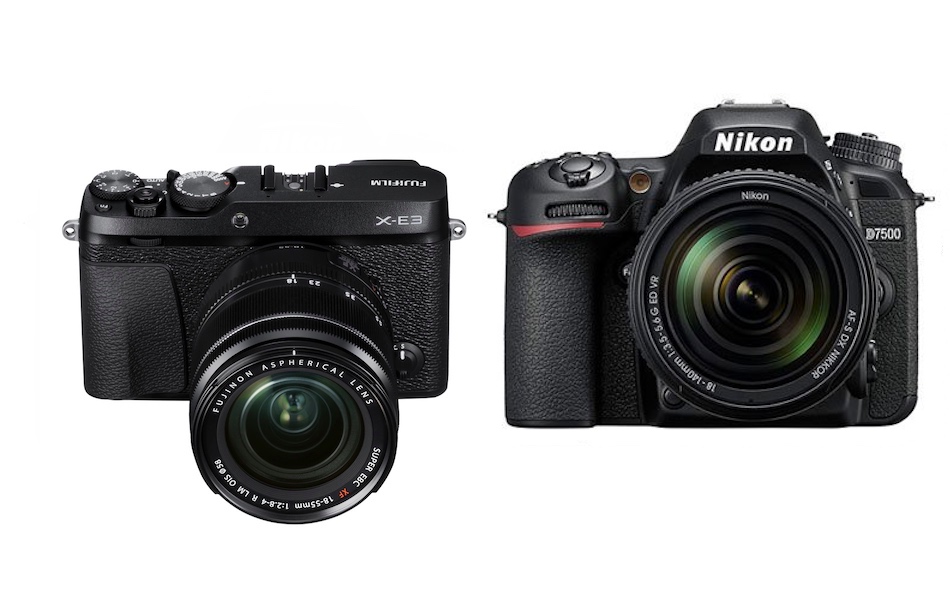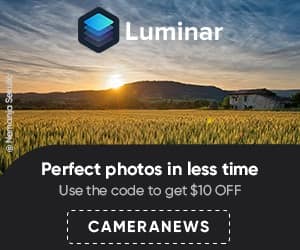Looking for the Fujifilm X-E3 vs Nikon D7500 comparison? Both cameras has APS-c sized image sensor, but let’s see which one is better for the money.
Even the new Fuji X-E3 has more megapixel in sensor resolution to the Nikon D7500, it has a significantly lightweight body that lacks weather-sealing. The Nikon D7500 borrows quite a bit of the tech from Nikon’s top-of-the-range DX-format DSLR, the D500. The DSLR offers a 20.9-megapixel APS-C CMOS sensor.
In our opinion, the X-E3 is quite satisfactory in terms of price performance. Do you think that the X-E3, with the price tag of only $899, offers enough features against the D7500?
Let’s have a brief look at the main features of Fujifilm X-E3 vs Nikon D7500. So what may be the main differences when consider their specs list? Current Fuji users might want to check out the X-E3 vs X-T20 vs X-T2 vs X-E2S – Comparison too.
Differences between Fujifilm X-E3 vs Nikon D7500 Cameras
If you’re trying to decide which one to buy as your first camera, here are the differences of Fujifilm X-E3 vs Nİkon D7500 cameras. Our comparison table below covers all the important specifications of each camera.
Fujifilm X-E3 vs Nikon D7500 Comparison Table
| Features | Fujifilm X-E3 | Nikon D7500 |
|---|---|---|
| Sensor resolution | 24MP APS-C CMOS | 20.9MP APS-C CMOS |
| AA Filter | No | No |
| Max Image Resolution | 6000 x 4000 | 5568 x 3712 |
| Image Stabilization | No | No |
| ISO | Auto, 200 – 12800 (expandable to 100-51200) | ISO 50 (exp)/ISO 100 – ISO 51200/ISO 1,640,000 (exp) |
| AF System | Phase Detection: 325 | Multi-CAM 3500FX II 51 point AF (15 cross-type) |
| LCD | 3.0″ – Fixed-type 1,040,000 dots | 3.2″ / 8 cm Titling touchscreen 921,600 dots |
| Viewfinder | EVF 0.62x magnification 100% coverage |
Optical 100% coverage 0.94x/0.63 x |
| Shutter Speed | 900-1/32000 sec | 30-1/8000 sec |
| Built-in Flash | No | Yes |
| Burst Speed | 8fps | 8fps |
| Exposure Compensation | ±5 (at 1/3 EV, 1/2 EV steps) | ±5 (at 1/3 EV, 1/2 EV steps) |
| Video Recording (max. res) |
4K UHD/30p, 25p, 24p | 4K UHD/30p, 25p, 24p |
| Time Lapse | Yes | Yes |
| Jpeg Buffer Size | 62 | 100 |
| RAW Buffer Size | 25 | 50 |
| Mic Input | Yes | Yes |
| Headphone Jack | No | Yes |
| Wireless Connectivity | Wi-Fi + Bluetooth | Wi-Fi + Bluetooth |
| USB Charge | Yes | Yes |
| Environmentally Sealed | No | Yes |
| Battery Life | 350 shots | 950 shots |
| Dimensions | 121 x 74 x 43mm | 136 x 104 x 73 mm |
| Weight | 337 g | 640g |
| Price | $899 | $1,250 |
Nikon D7500 Advantages:
- Tiltable Screen – The Nikon D7500 has tilt for the screen to shoot flexbility
- ISO – 1638400 vs 51200. Higher maximum ISO sensitivity.
- LCD – 3.2″ vs 3.0″
- Top LCD Display – When shooting in semi-auto/manual modes, you can quickly preview all of your settings.
- Headphone Jack – Useful for previewing your audio quality straight out the camera.
- Slightly More RAW / JPEG Buffer Size
- Battery Life – 950 shots vs 350 shots.
Fujifilm X-E3 Advantages:
- AF Points – 325 vs 51.
- Focus Peaking – Very useful for seeing to see what is in focus (both photo and video).
- On Sensor Phase Detect – Improves live view and video AF performance
- More megapixels – The Fuji X-E3 offers higher resolution potos
- Weight and Size – The Fuji X-E3 is noticeably smaller and weighs less.
- Less Expensive – X-E3 is more affordable than the D7500 so you save for lenses and accessories
Read more Fujifilm Mirrorless news and Fujifilm Rumors.

